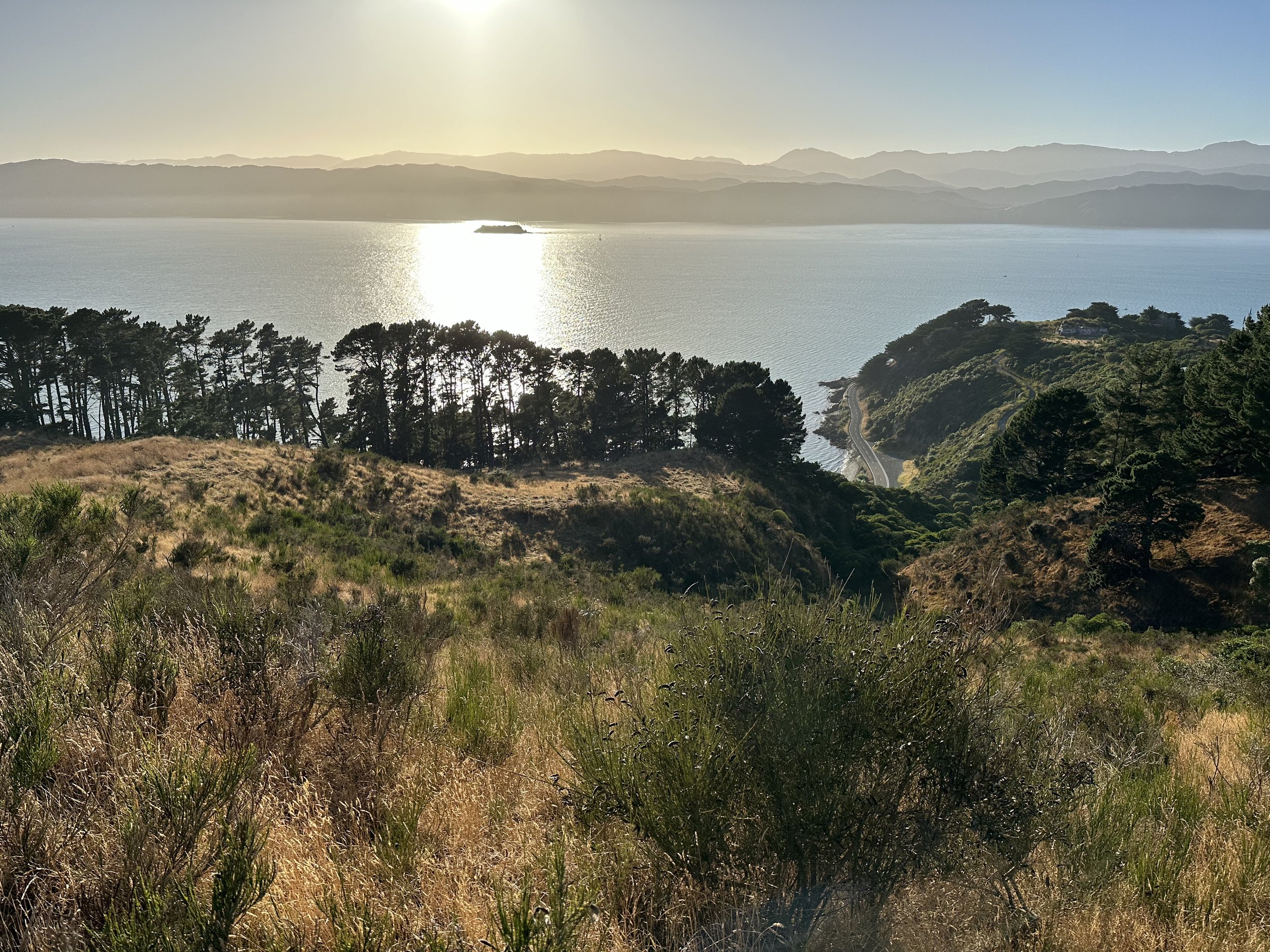
History of Te Motu Kairangi
And the proposed Mātai Moana Reserve
A brief history
Te Motu Kairangi (the island held in high esteem) became a peninsula when the Haowhenua earthquake c. 1460 lifted what is now Kilbirnie/Rongotai, joining the island to the mainland.
In Māori legend, Te Whanganui-a-Tara (the great harbour of Tara) was once a lake inhabited by two taniwha, Ngake and Whātaitai. Ngake escaped to the ocean, but Whātaitai got stuck; his body now forms the isthmus between Te Motu Kairangi and the western side of the harbour.
Ngāi Tara – also known as Muaūpoko, the people living at the head or ūpoko of the fish of Māui – were the earliest settlers, occupying Te Motu Kairangi for centuries. In 1819–20 they were attacked and displaced by Ngāti Toa, whose allies included Te Āti Awa. Te Āti Awa were occupying the peninsula when the Treaty of Waitangi was signed in 1840.
In 1840 British settler James Coutts Crawford purchased the peninsula from the New Zealand Company for farming.
Shelly Bay became a defence base for the navy in 1885. Later it was taken over by the air force. Major fortifications were constructed on Mount Crawford from this time until the Second World War as defence against real or perceived invasion threats.
Mount Crawford prison was built on Mātai Moana in 1927; it would be finally closed in 2012.
The air force ceased occupying Shelly Bay in 1995. The Defence Department land was sold to Taranaki Whānui’s treaty settlement arm, Port Nicholson Block Settlement Trust, in 2009. PNBST’s later leadership entered into a controversial relationship with developer The Wellington Company (TWC) and reached agreement with Wellington City Council to use the Housing Accords and Special Housing Areas Act 2013 to change planning rules and procedures and to acquire additional council-held land in the bay for a development of 350 dwellings, a retirement village and other commercial activity. Under the Act the community was specifically excluded from meaningful involvement. PNBST sold its land to The Wellington Company despite successive resolutions by its membership opposing the sale.
From 2015–23 the planned Shelly Bay development was the subject of bitter political and legal challenges and a 525-day occupation by Mau Whenua, representing members of Taranaki Whānui who opposed the sale and the development. The developer later carried out extensive bulldozing of the land and felled trees, including old pohutukawa.
In September 2023, while the hui series was taking place, TWC decided the development was no longer viable and sold the land to film-makers Peter Jackson and Fran Walsh. The couple stated intentions for the land included ecological and heritage restoration, public recreation and possibly arts and cultural activity. They commenced work to restore and replant the damaged landscape almost immediately.
Meanwhile, in 2011 the minister of treaty relations, mayor of Wellington, chair of the Wellington Regional Council and chair of PNBST announced that the 76-hectare Defence site on the hill above would become a national heritage park.
(For more, see NewsHub here and Stuff article Here)
No firm position was taken on the 13 hectares of adjacent land, occupied in part by the disused prison, although the Cabinet has since considered proposals for sale of some or all of this land and also land set aside for the heritage park.
The government said it recognised the need for ‘extensive’ community engagement, given the significance of the land and its long-standing open space zoning. Some initial community involvement occurred. However, since then discussions have taken place only between the Crown and PNBST, with the public and the Wellington City Council excluded.
In 2023 Taranaki Whānui, supported by The Wellington Company, applied for fast-track resource consent under the COVID-19 Recovery (Fast-track Consenting) Act 2020 for a 650–700 dwelling development on Mount Crawford/Mātai Moana. If granted this would have again denied the public a say, despite the development being at odds with the open space zoning and with community expectations.
In May the then minister for environment David Parker declined the application, stating that any consent application should go through the normal RMA process. The fast track’ Act expired on July 8.
Both the Defence and Corrections Department land at Mātai Moana, now administered by Land Information New Zealand (LINZ), are zoned Open Space (B) under the Wellington City Council’s current District Plan and have been for at least 30 years. Under the Proposed District Plan they would be zoned Natural Open Space and be subject to additional landscape and significant natural areas protection. Those provisions do not provide for or anticipate development. The proposed planning rules will be subject to hearings before independent commissioners in early 2024 as part of the new District Plan process.
Friends of Miramar Peninsula considers that, in the absence of community support, there is little likelihood of consent for extensive development of Mātai Moana succeeding. We support the generation of a collective, widely supported vision for the future of this land, which should then be provided for through special planning provisions and governance and legislative (if needed) arrangements.
It was against this backdrop that we planned and held this series of hui. The aim was to listen to community and iwi aspirations for this important and much-loved area and ascertain how we might best work to see them achieved.
